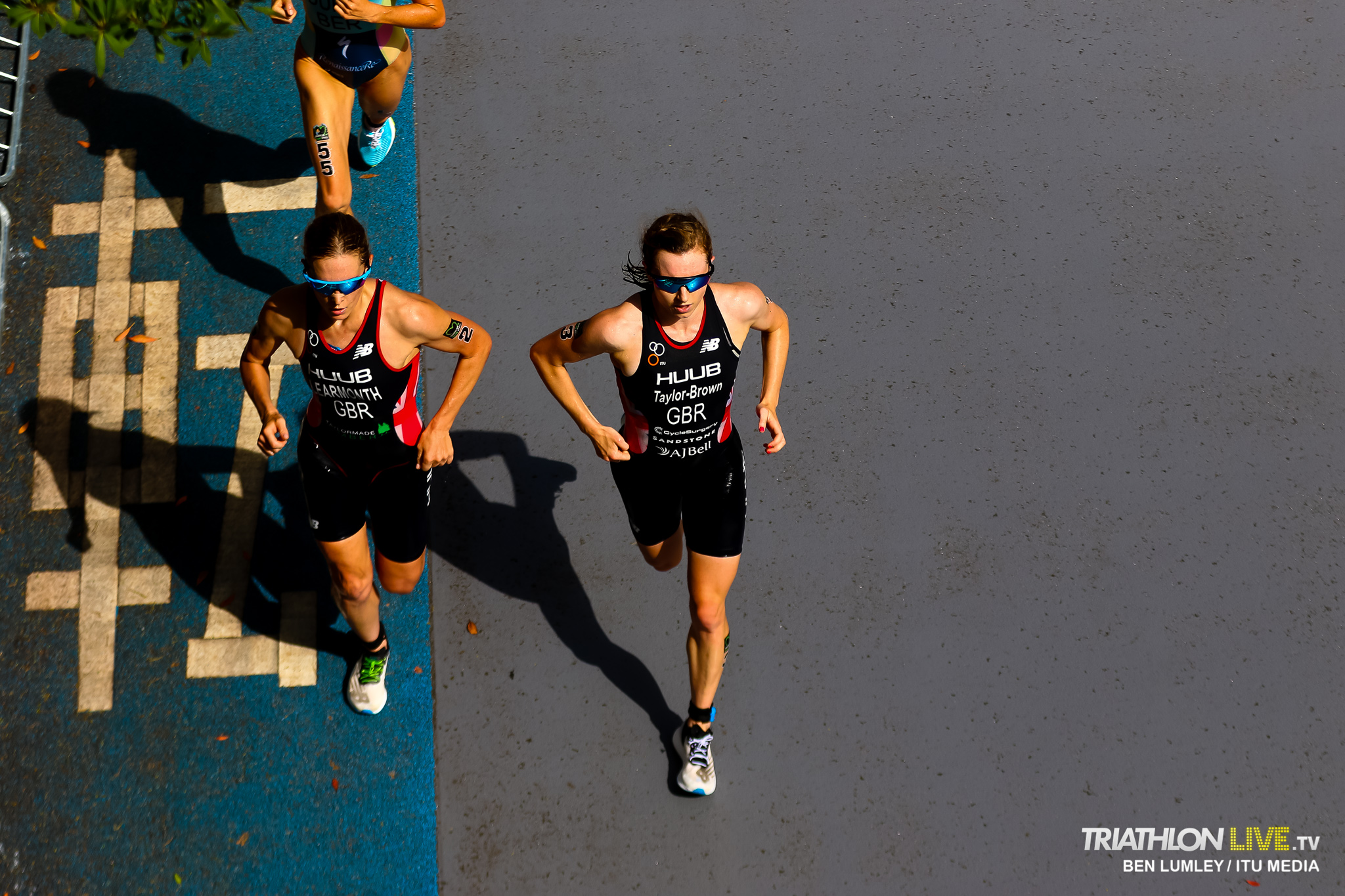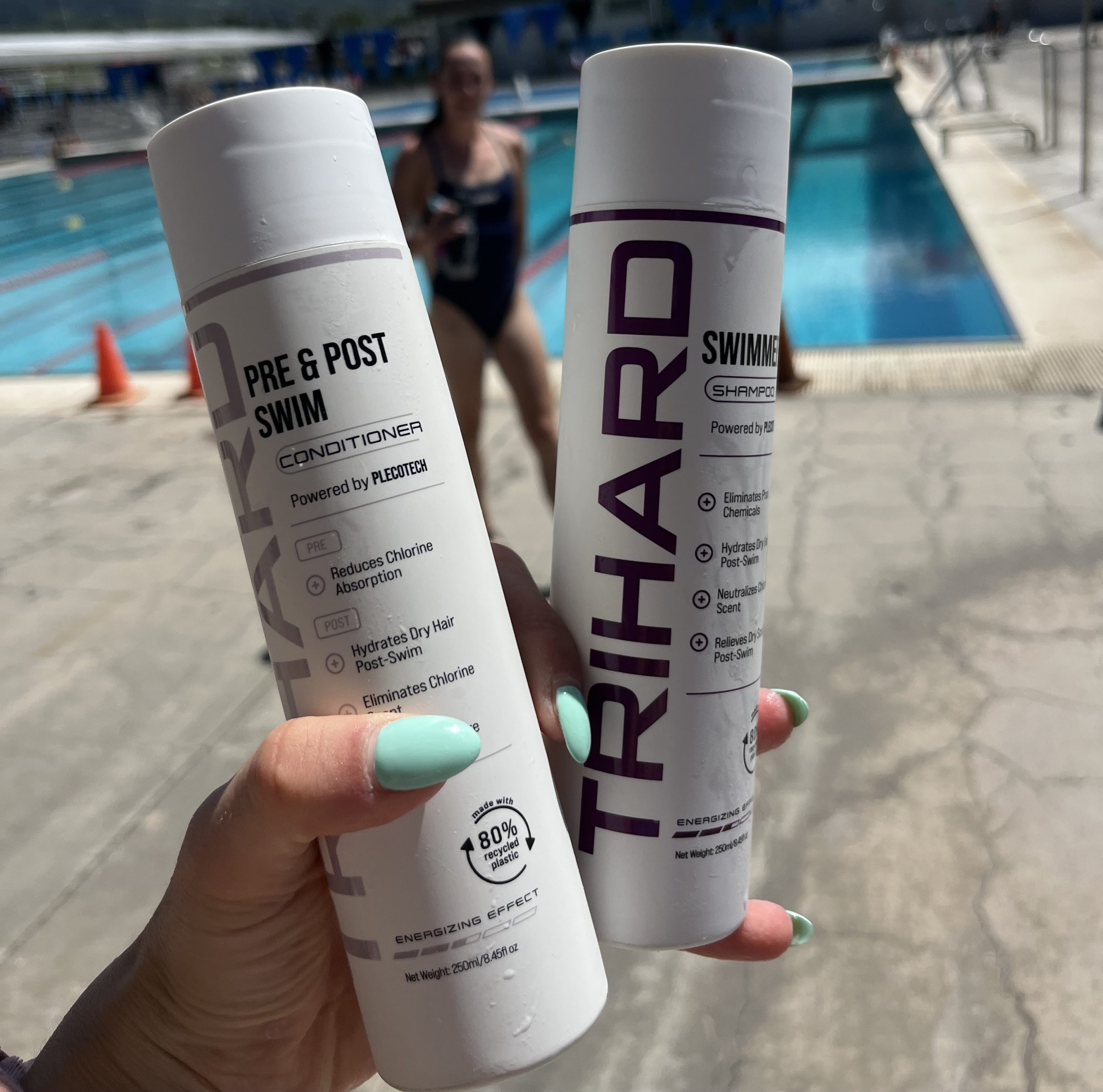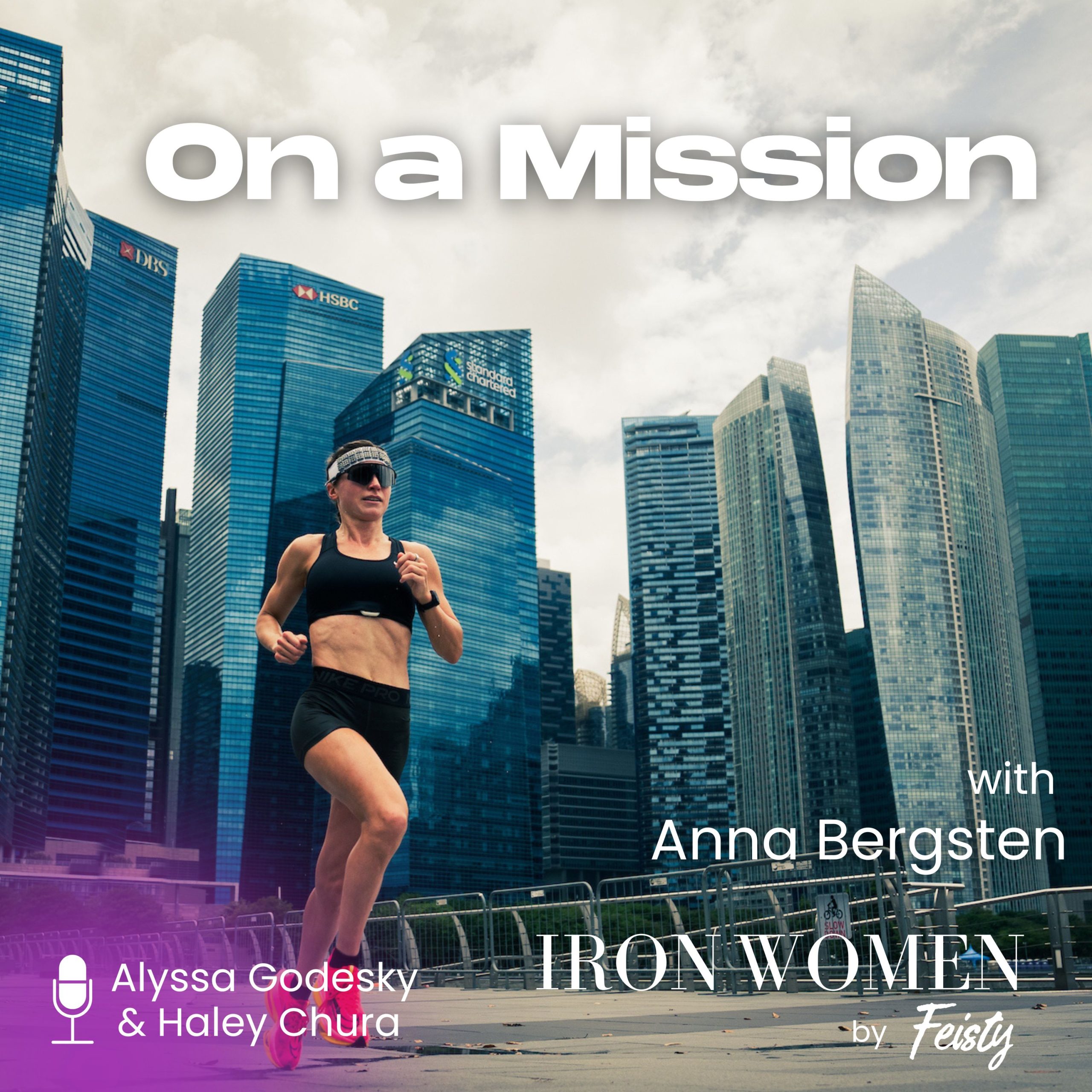August 21, 2019
Newsletter ep. 101: why the DQ was fair

A controversy in Tokyo gets two triathletes disqualified—and Kelly explains why that was the right decision. Plus, the start lists for Kona and the 70.3 World Champs in Nice—and some haphazard predictions.
_____________________
I’m back on the best coast and trying to get back to work. But, whew, what’s the saying: Life is what happens while you’re doing other stuff. Or something like that.
One of the things I was thinking about this week: Jordan sent me a link to Prana’s dream job contest—$100K to pursue your dream career for a year, but you have to quit your current job to go after it. And I was like: What’s my dream? Would they give me $100K to try to win an Ironman and write a book about it? Is that even a thing? Sure!
__________________________
Drama in Tokyo
Photo: Ben Lumley/ITU
By now, you’ve heard about the drama that went down at the Tokyo Test Event last week. It’s even gone mainstream. (If you didn’t read last week’s newsletter on how to watch the Olympic qualification race, then you hella missed out.)
We talked about the drama on this past Friday’s podcast, but in sum: British teammates and training partners Jessica Learmonth and Georgia Taylor-Brown crossed the line in first, together and holding hands. They were disqualified for intentionally tying.
I wrote a really detailed argument for Triathlete Mag on why the ITU had no choice but to DQ them, and you should read the whole thing before you @ me with arguments about why the ITU should ignore their own rules. But I’ll sum up real quick.
1. Most importantly, there’s a very clear rule banning intentional tying. They very clearly intentionally tied. It’s not complicated.
2. Don’t be all “but what about the Brownlees.” There was no rule against the one Brownlee carrying the other three years ago. There is a rule against it now because people *wanted* them to be DQ’d.
3. Maybe the anti-tying rule is a dumb rule. Yes, it’s probably too harsh. But I’m 90% sure it was made a rule after Lisa Norden and Nicola Spirig intentionally tied back in like 2011 (?) and people were pissed about that, because it wasn’t “fair.” Plus, there was a lot of concern about the Brownlees attempting a manufactured tie at the 2012 Olympics. Basically, we aren’t actually generally for manufactured finishes.
4. The more and more I think about it (and, again, I outlined this in the Triathlete Mag piece): No, it isn’t inherently good sportsmanship. It’s not like they’re saying, “Oh, instead of me getting first, I’d rather we both tie for second.” What they’re hoping is they can *both* get to be first and the ITU hands out double the prize money?
Which brought me to my solution: Maybe if you decide to intentionally tie, then you’re tying for second. No one wins, you’re both second. And that’s the penalty and, inherently, the sacrifice.
The other thing I keep coming back to though, which I only touched on briefly in all the kerfuffle, is this: Why is this a trend in women’s races? We’ve been seeing it a lot in the last couple of years, but almost never in men’s races. Why?
A few other things from the Tokyo race:
– The heat! Because of the heat/humidity index, the women’s race was shortened, but shit, it isn’t going to be cooler next year. They’re elite athletes, I think we should let them do their race. I’d also like to know why, in a country that far north with ocean access, they’re swimming in 86 degree water.
– I saw Flora Duffy say on her Insta stories they shouldn’t have shortened the race, the staff was well-prepared, the athletes could handle it. And, oh man, Flora! First race back in over a year and she pulls off third (ie. first post-the-DQ).
– Aghh, Katie Zaferes’ crash was brutal! If there was one person who seemed like a near lock to qualify, it was Katie. Instead she got 23 stitches in her mouth where her gums separated on impact. I don’t even know how that happens.
– The men’s race was way more boring, even with the sprint finish.
– Because I read the ITU rule manual on Wednesday night, since I couldn’t sleep, I also found out about rules 2.5.o and 2.5.p, which have to do with sexual reassignment and women with hyperandrogenism. And which I can imagine may come up a some point in the future…
Kona qualified
The final Kona spots have also been allocated after IM Mont Tremblant and IM Copenhagen this past weekend. Thorsten, as usual, has the full list and will be doing his usual Kona analysis soon. In total, it’s 44 women and 57 men—almost exactly what I predicted.
In terms of the races, Brad has the recap. Let’s just say thank God Sarah True finally got her spot. Though I can’t imagine following up her last few months with Kona in October. Lionel Sanders also, evidently, waited until the last minute (after illness and injury earlier this season). But it was really Carrie Lester and Cody Beals at IM Mont Tremblant who dominated, going sub-8 and sub-9.
And at IM Copenhagen, holy hell Anne Haug. 8:31:32 is one of the fastest full-distance times ever (depending on if you count Roth, etc, etc). She did not look like someone who plans to be third again in October.
Now for Nice
The final 70.3 World Championship start list was also released this week:
– On the women’s side, it’s obviously a Holly v. Lucy v. Daniela battle. And I’m going to say something crazy: I actually think this is Holly’s to lose. Given that Lucy will swim away from everyone, Daniela and Holly will close the gap, and then we’ll see I guess. But Holly is more peaked, more ready, more practiced on the course, and more on fire at this distance.
– On the men’s side: It’s Javi v. Alistair. Sure, there are others. Don’t count out Patrick Lange, Ben Kanute, or Sebi Kienle. It’s likely we’ll have a nearly as epic race as we did last year, but I just don’t think they’ll all be there when things really go down. I think it’ll be Alistair, Javi, Ben. In that order. My back-of-the-napkin prediction.
– There are 64 women and 67 men. Which isn’t as many people declining their spots as I thought there’d be. We’ll see how many actually start though.
– The wave starts are also quite good. IMO. Well spaced out and intelligently thought through to minimize crowding. Now, if they just rotate the men and women each year (as everyone assumes they do, because it makes sense), then we’ll all be happy.
_______________________
- Sara wrote a remembrance of Kevin Young and everything he did for other people even when he had no personal stake in it. (Live Feisty)
- I also wrote a number of tips on how to incorporate Swimrun into your training program, if you didn’t get enough from our podcast. (Triathlete/Soundcloud)
- Is gravel the new power sport? Yeah, sigh, probably. (Worth)
- Is CBD the new unregulated miracle cure? Yeah, sigh, definitely. (New York Times)
- A lot of people sent me the story last week of the woman who won a 50K outright and had to take home the ‘overall’ winner and the ‘female’ winner trophy. Now, there’s all this hullabaloo about how to avoid this awkward situation. Here’s an answer: Give out a first place male and a first place female award, and that’s it. End of problem. (Runner’s World)
- Magdalena Boulet won Leadville 100 this weekend too with a jump across the finish line, and I just love her. She’s been a pro runner on the track, an Olympic marathoner, and now a world class ultra runner. Why the hell not. (Instagram)
- I never bothered to wonder where all those drinking party bikes have come from. Now I know. (Bon Appetit)
- I did, however, wonder the other day why women play softball and not baseball. Turns out they *do* play baseball; we just try really hard to stop them. (SB Nation)
- Nike expanded its maternity protections for athletes. Or, as one outlet put it: ‘After losing one of its top female athletes, Nike decides it cares about maternity rights.’ (Washington Post/ThinkProgress)
- Mediation between US Soccer and the national women’s team has broken down. I, personally, feel unshocked by this. (CNN)
- A U.S. fencer knelt at the PanAm Games and a hammer thrower put up her fist. They may now face sanctions and punishment. And, honestly, that I am shocked by. Aren’t we past that point, like three decades past it? (New York Times)
- The L.A. Times has this really interesting profile of the guy who was accused of cheating in the L.A. Marathon (and others) and later killed himself after the vitriol. The story was clearly written before the suicide and it adds a layer of, I dunno, compassion to the whole thing. (L.A. Times)
- These photos of California from above, after fires and battering and drought, is just sort of mesmerizing. (California Sun)
_________________
Comments & thoughts
– Kim pointed out the 70.3 Worlds next year have to be in November, because it’s too cold in the bottom hemisphere in September! It’ll still be wacky for Kona timing though.
– People had even more questions about Swimrun. To which I say: Just go do one!
– To the question ‘what battles still need to be fought in triathlon?‘ Christina says, “Lots, and not just in triathlon, in all sports equality is illusive. Women being in charge will make the difference.” Amen, Christina, don’t even get me started on my ‘let’s just take over the systems in order to dismantle them’ rant.
__________________
‘If We Were Riding’ is a weekly triathlon-ish newsletter written by Kelly O’Mara and produced by Live Feisty Media. Subscribe to get it in your inbox every Wednesday morning. You can also read past issues. This episode is from Aug. 21, 2019.


 Outspoken Women in Triathlon Summit Returns Bigger than Ever
Outspoken Women in Triathlon Summit Returns Bigger than Ever  Driving the Lamborghini: Productivity and the Power of Paper
Driving the Lamborghini: Productivity and the Power of Paper  5 take aways from the Compete Sports Diversity Summit
5 take aways from the Compete Sports Diversity Summit  Simple Tips to Hone Your Bike Handling Skills
Simple Tips to Hone Your Bike Handling Skills 



